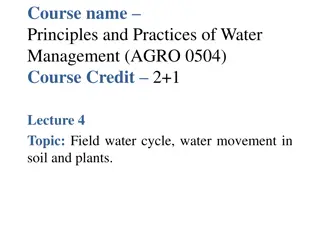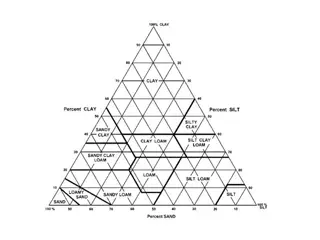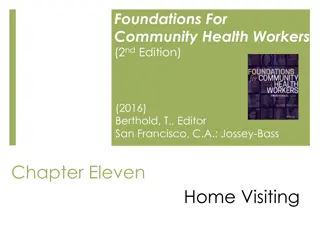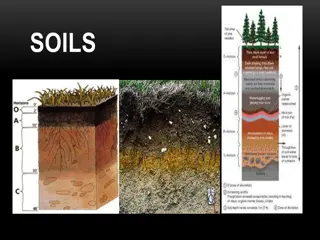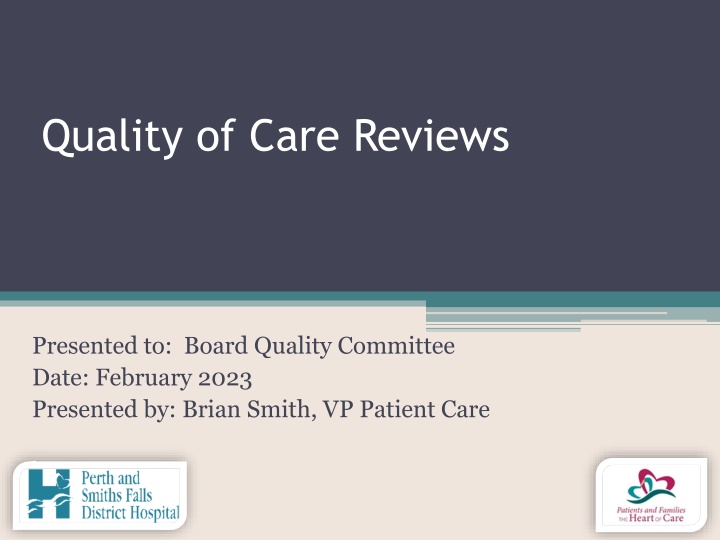
Soil Health Card Scheme: Salient Features, Challenges & Field Visits
The Soil Health Card Scheme aims to provide site-specific nutrient management for 14 crore farmers in a 3-year cycle. It involves soil samples, analysis, and distribution of health cards with parameters like pH, EC, N, P, K, and more. However, common challenges such as shortage of manpower, inadequate labs, and administrative issues hinder its effectiveness. Field visits reveal observations like lack of clarity in plot identification and underutilized agricultural equipment. Feedback includes suggestions for better linkages with agricultural inputs and flexibility in expenditure.
Download Presentation

Please find below an Image/Link to download the presentation.
The content on the website is provided AS IS for your information and personal use only. It may not be sold, licensed, or shared on other websites without obtaining consent from the author. If you encounter any issues during the download, it is possible that the publisher has removed the file from their server.
You are allowed to download the files provided on this website for personal or commercial use, subject to the condition that they are used lawfully. All files are the property of their respective owners.
The content on the website is provided AS IS for your information and personal use only. It may not be sold, licensed, or shared on other websites without obtaining consent from the author.
E N D
Presentation Transcript
Quality of Care Reviews Presented to: Board Quality Committee Date: February 2023 Presented by: Brian Smith, VP Patient Care
What is a critical incident? An unintended event that occurs when health services are provided to an individual and results in a consequence to him or her: a) Serious and undesired, such as death, disability, injury or harm, unplanned admission to hospital or unusual extension of a hospital stay, and b) Does not result from the individual s underlying health condition or form a risk inherent in providing health services
What is a critical incident? Some examples: Being operated on the wrong side or site Receiving the wrong medication or wrong dose of medication that results in serious harm to the patient Breakdowns in communication during transitions of care that result in serious harm to the individual Delaying treatment or not receiving treatment when this results in a preventable adverse outcome to the patient
Quality Root Cause Analysis Immediate Response: Care for and support patient/family/providers/other Report incident Secure items Begin disclosure process Reduce risk of imminent recurrences Before the Incident: Ensure Leadership support Cultivate a safe and just culture Develop a plan
Quality Root Cause Analysis Analysis Process: Understand what happened Determine how and why it happened Develop and manage recommended actions Prepare for Analysis: Preliminary Investigation Select an analysis method Identify the team Coordinate meeting
Quality Root Cause Analysis Close the Loop: Share what was learned Medical Quality Assurance Committee (MQA) tasked with monitoring completion of action plans Board Quality QRCA s reported and action plans are shared Follow Through: Implement recommended actions Monitor and assess the effectiveness of actions
Quality Root Cause Analysis Human factors Staffing Scheduling Orientation/training Competency assessment Supervision Qualification/requirements Equipment Factors Preventive maintenance Equipment failure Equipment availability Defective equipment User error System Factors and Processes that can contribute to a negative patient outcome: Information Factors Accurate data Through and available data Unclear data/information Lack of Technology Communication Factors Among staff Between staff and patient or family Between physician and staff Between physician and patient or family Between levels of care, units or external facilities Environmental Factors Physical Cultural Uncontrollable external Environmental risks Quality control Safety, security, utility, HAZMAT, emergency preparedness Policy, Procedure and Practice Factors Assessment, reassessment, monitoring Care planning Patient/family education Care and treatment protocols and practices Patient identification Patient observation
Quality Root Cause Analysis The Action Plan will address: (Role of MQA) 1. Responsibility for implementation 2. Oversight 3. Testing as appropriate 4. Time lines 5. Strategies for measuring the effectiveness of the actions
Quality Root Cause Analysis A Quality Root Cause Analysis is not a meeting to lay blame, counsel staff or create feelings of inadequacy/share. This is a systems review. If any disciplinary issues are identified, they are dealt with separately, and are not ever reviewed within a QRCA
Quality Root Cause Analysis (QRCA) Board Quality Oversight MQA s Oversight

